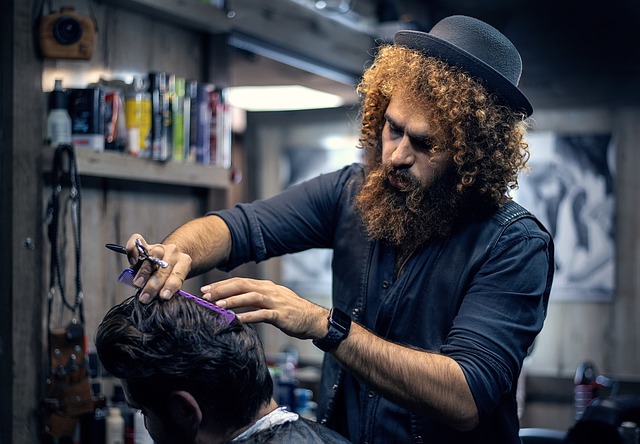BEARD & SHAVE
Lengthy or trimmed, dense or light — the size and fullness of your beard may not be as significant as you believe when it comes to upkeep. Beards in all forms and dimensions demand maintenance for the best appearance and well-being.
That being said, the extent of maintenance you’ll need to undertake will hinge on your desired beard objectives. Other critical factors encompass the pace of your hair growth and its texture, which fluctuate among individuals due to genetics, age, and general health.

Maintaining Your Beard
Maintaining a well-groomed beard is a vital aspect of personal care and hygiene for men who choose to sport facial hair. The importance of proper beard maintenance goes beyond mere aesthetics; it encompasses health, confidence, and overall well-being. A well-kept beard not only enhances one’s appearance but also prevents potential skin issues and helps in promoting healthy hair growth. Furthermore, a well-maintained beard serves as a reflection of an individual’s attention to detail and self-care, which can leave a positive impression in social and professional situations. In this guide, we will explore the essential do’s and don’ts of beard maintenance, ensuring that you are equipped with the knowledge to keep your facial hair in pristine condition while exuding an aura of confidence and sophistication.
Try to wash your beard 2-3 times per week
It may seem obvious, but no one wants an unclean beard. However, unless your facial hair encounters substantial dust or dirt, or becomes particularly sticky or messy due to a mishap, there’s no need to cleanse your beard every day.
Cleansing your beard 2 or 3 times a week and upholding proper grooming practices, such as consistent brushing, can maintain beard cleanliness.
Gentle approach when cleansing your beard.
Treat your beard and skin kindly by:
- utilizing a mild beard wash or shampoo
- refraining from washing your beard excessively often
- abstaining from aggressive scrubbing
Overwashing or using excessive force during cleansing can result in your beard and the underlying skin becoming dehydrated, potentially leading to itchiness and irritation.
Hydrate your facial hair
A well-hydrated beard will feel softer, smoother, and more manageable. This, in turn, enhances its overall appearance and ensures that it looks healthy and vibrant. Also moisturizing your beard helps to prevent dryness and irritation of both the facial hair and the underlying skin. Adequate hydration reduces the likelihood of experiencing itchiness, redness, and discomfort.
Keeping your facial hair hydrated helps to maintain its structural integrity, reducing the chances of breakage and split ends. This ensures that your beard remains in good condition as it grows. A hydrated facial hair is easier to style and maintain, as it is more manageable and less prone to tangling or matting.
In summary, hydrating your facial hair is crucial for maintaining a healthy, attractive, and comfortable beard. Regular moisturization ensures that your beard looks and feels its best while minimizing the risk of skin irritation and promoting overall beard health.
Trim your beard regularly
Even if your ideal beard resembles a long, lush, Gandalf-like masterpiece, regular trimming will prove advantageous.
Trimming offers the following benefits:
- preserving the shape and length of your beard
- addressing split ends to maintain beard health
- managing your moustache
Many bearded individuals prefer keeping their moustache above the lip, necessitating frequent trims.
The frequency of beard trimming and the amount to be removed depending on your hair growth rate and your current stage in the beard-growing journey. As a general guideline, trim your beard approximately every 4 weeks if you aim to grow it longer. To maintain your current length, target trimming every 7 to 10 days.
If you require assistance with shaping and trimming, consider seeking a professional beard trim and then following the established lines during your subsequent at-home trims.

Three Most Famous Beard Types
While there are numerous beard styles to choose from, the three most famous beard types include:
Full Beard
The full beard is a classic and popular style that features facial hair covering the cheeks, chin, upper lip, and neckline. This beard type can vary in length, from a short, neatly groomed beard to a long and bushy one. Full beards can be shaped and styled to suit various face shapes and personal preferences, making them versatile and widely appealing.
Goatee
A goatee is a smaller beard style that predominantly covers the chin and sometimes connects to the mustache. There are many variations of goatees, including the classic goatee (hair on the chin only), the Van Dyke (a goatee combined with a detached mustache), and the circle beard (a goatee connected to a mustache, forming a continuous loop). Goatees are popular because they can suit different face shapes and often require less maintenance than a full beard.
Stubble
Stubble is a short, evenly trimmed beard that gives a rugged, masculine appearance. It is often achieved by allowing facial hair to grow for a few days and then maintaining the desired length using a beard trimmer. Stubble can range from light (1-2mm) to heavy (3-5mm) and can be an attractive option for those who prefer a low-maintenance beard style or are in the early stages of growing a fuller beard.
Of course, beard preferences can vary by culture and individual taste. The key to finding the perfect beard style is considering factors like face shape, hair growth patterns, and personal style preferences. If you need more help and advise on your hairstyle and beard maintaining Barber Gossips has a lot more to share.
